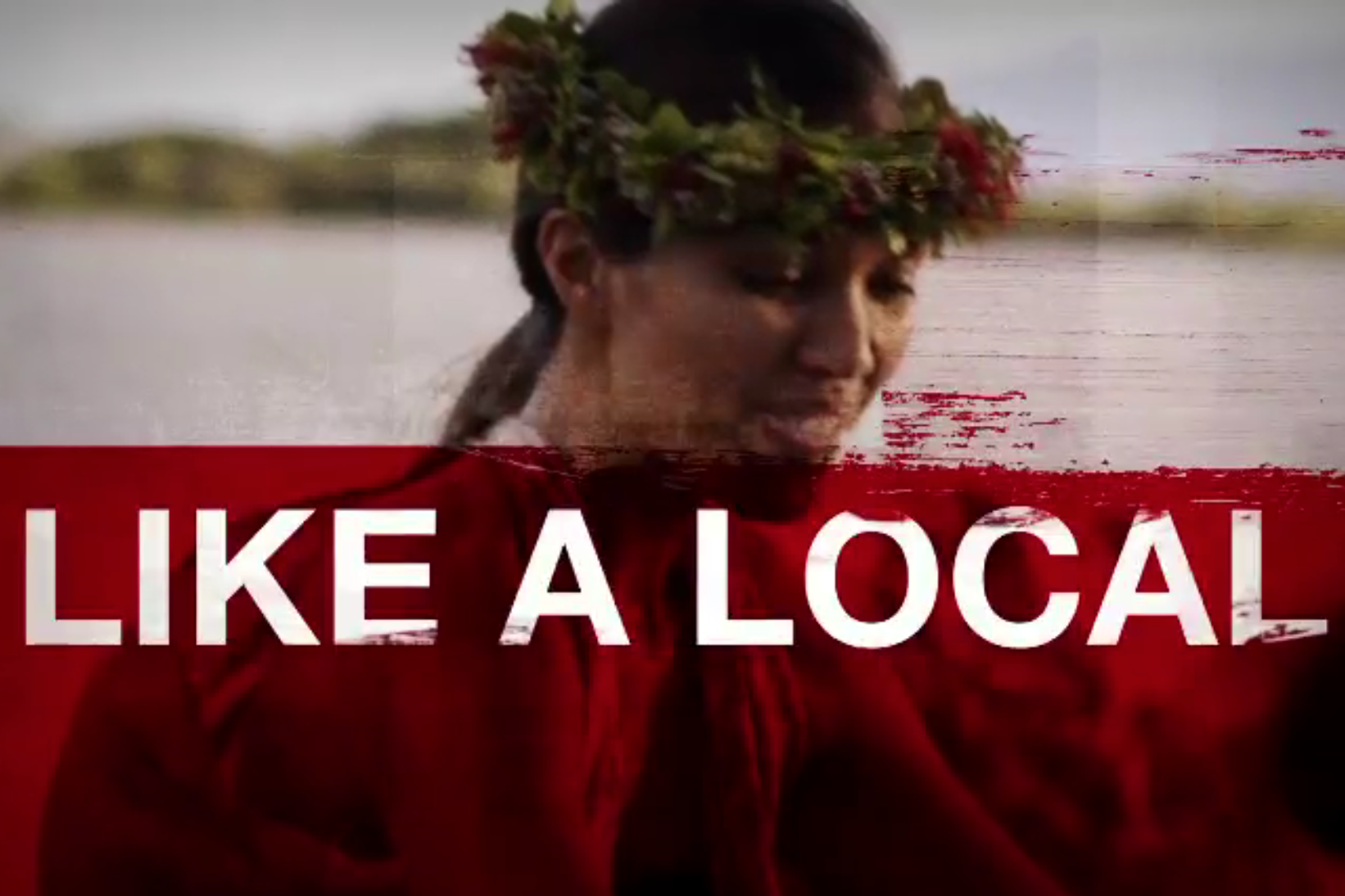In the upcoming episode of CNN’s Parts Unknown, Anthony Bourdain heads to Hawai‘i, promising a look into how to “experience the islands like a local.” In true Parts Unknown style, Bourdain digs into gut-busting local foods, like hamburger steak, taco rice, and of course, Spam, the luncheon meat he can’t seem to get enough of; there’s even an epic clip of him bagging a tako, freshly caught from Moloka‘i’s waters, after making a few clumsy attempts to kill it by biting its head.
As promised, Parts Unknown shines light on experiences even I, as a born-and-raised local, have yet to encounter (Moloka‘i, swimming with whales, canoe surfing) and had me realizing that I can be inspired even in a place that I have known all my life.
The episode largely focuses on uncovering what it means to be Hawaiian and the ever-so-slight but hugely important difference of “being Hawaiian” versus “being from Hawai‘i.” He speaks to impassioned locals like Polynesian Voyaging Society navigator Nainoa Thompson; activist-turned-fishpond-caretaker Walter Ritte and fellow fishpond guardian Guy Hanohano Naehu; and a Maui waterman he simply calls “Uncle Ross.” He also spends time with a few not oft interviewed transplants like novelist Paul Theroux and talent manager Shep Gordon.
I admit it: I’m a sucker for Bourdain. I fanned out when I got to sit in on one of the tapings of this episode and stare at the back of his head while he chowed down on Spam and egg sandwiches. What I appreciate most about his show(s) is that he isn’t afraid to cover a city’s most pressing issues and uncover something audiences don’t already know about a place, most often told through a series of vignettes of both a community’s daily triumphs (pupusas in Detroit) as well as its breakdowns (Tehran journalists “mysteriously detained” following a lunch with Bourdain).
There’s a great moment between Hanohano and Bourdain, who asks Hanohano about who gets to be Hawaiian? “Hawaiian is a nationality,” Hanohano tells an incredulous Bourdain. “If you can love this place and you can malama our aina the way we love it and the way our ancestors loved it, we can be more than friends, we can be family.”
I appreciated the show’s crash course on Hawai‘i’s history, from Captain Cook to statehood to present, but generally, the episode paints modern day Hawai‘i as, yet again, an idyllic paradise filled with natives who appear perpetually on vacay, spending their days canoe surfing until the sun sets, roasting pigs in imus, eating plate lunches, dancing hula, and pounding poi at family parties. “This is what we do in the islands,” says pig roaster and rancher Julio. “That’s what it’s all about.” So you mean Hawai‘i is paradise? We haven’t heard that one before.
I suppose it is unfair of me to expect that some of the most serious issues facing Hawai‘i actually be portrayed on the world’s stage in less than an hour of television. After all, who would enjoy a paradise where homelessness has reached monumental proportions; a place ranked worst in the country for affordable housing for young adults; a place with traffic only slightly better than Los Angeles and San Francisco; where victims are treated as perpetrators?
It is our paradise, one we will enjoy long after the cameras have left.
Parts Unknown Hawai‘i airs on CNN this Sunday, June 14, at 3 p.m. HST.

